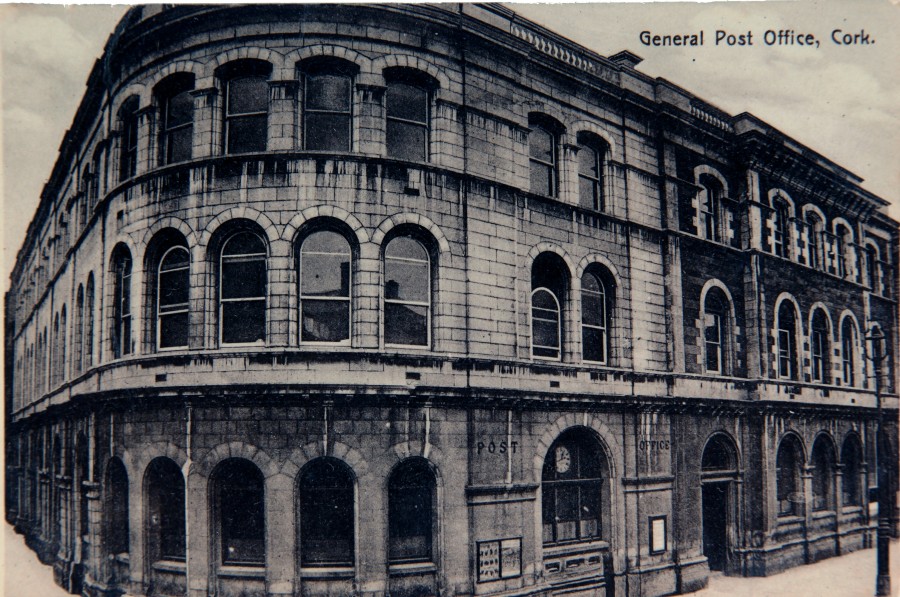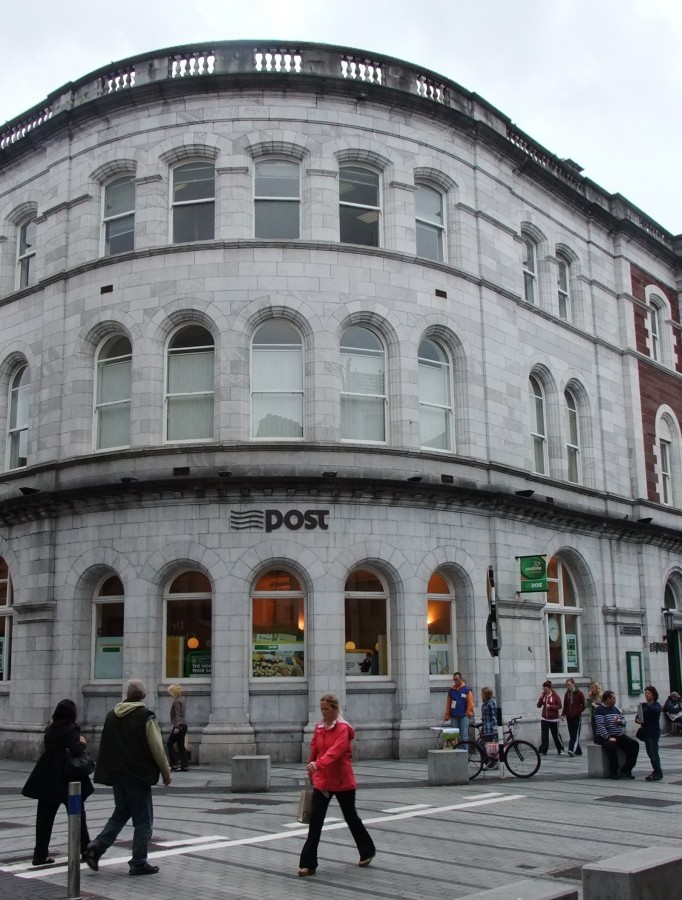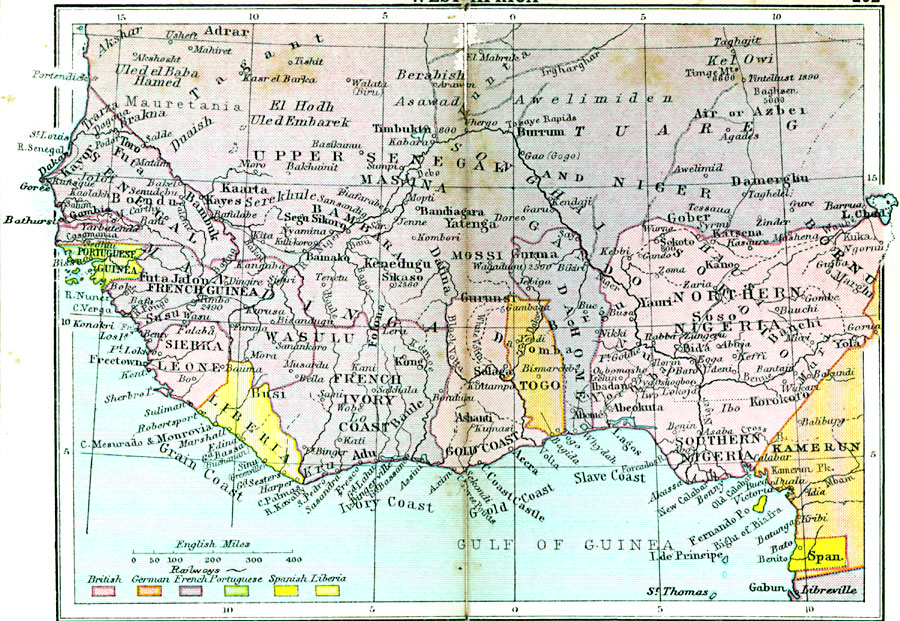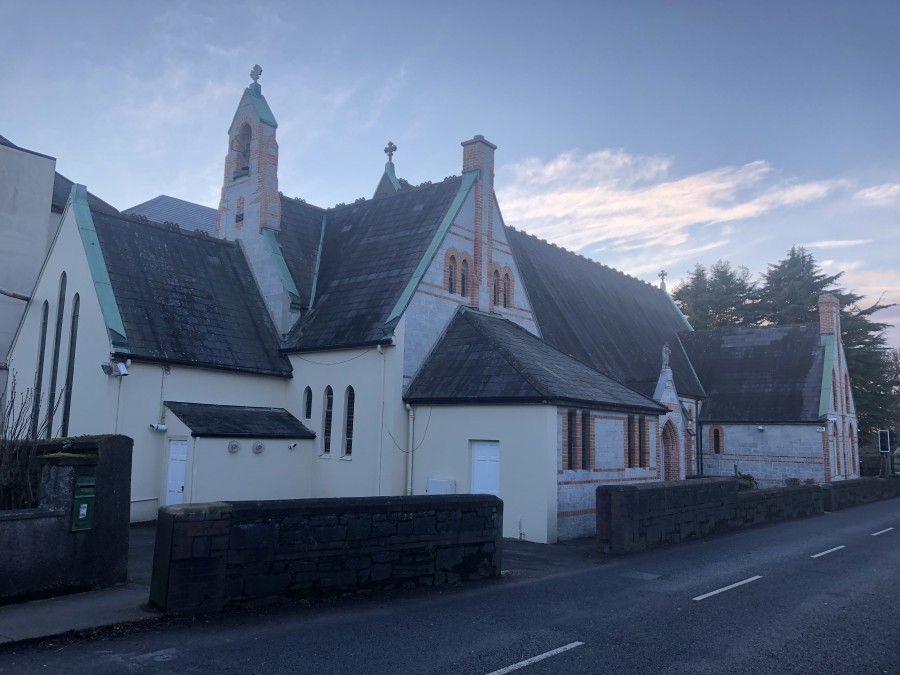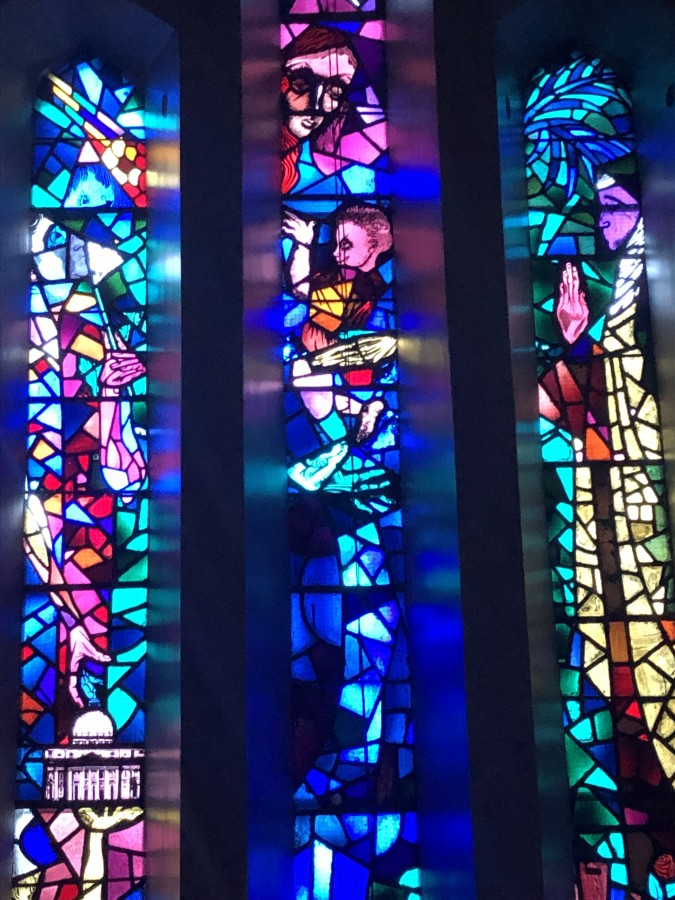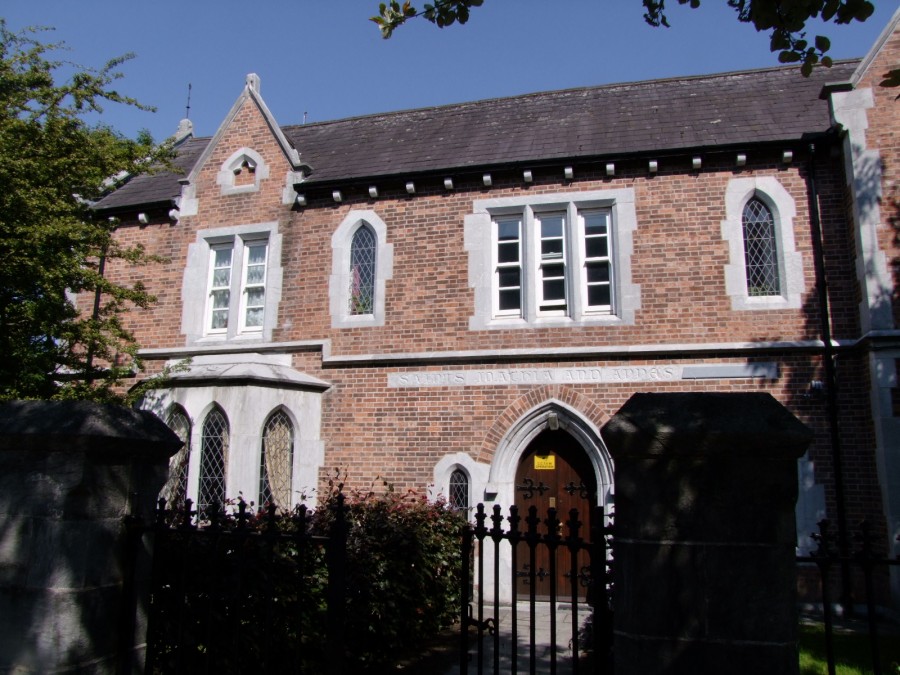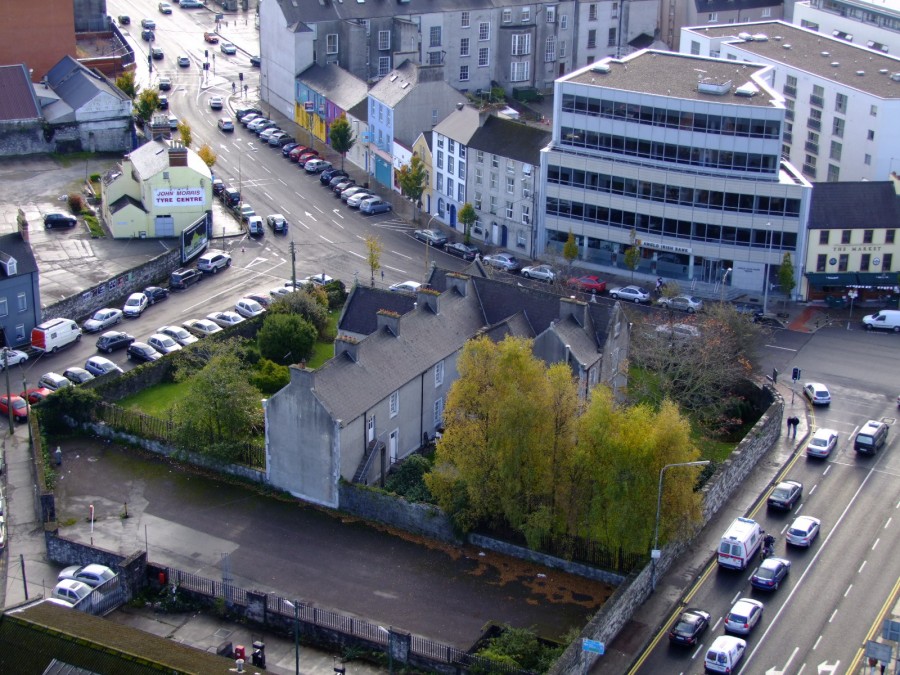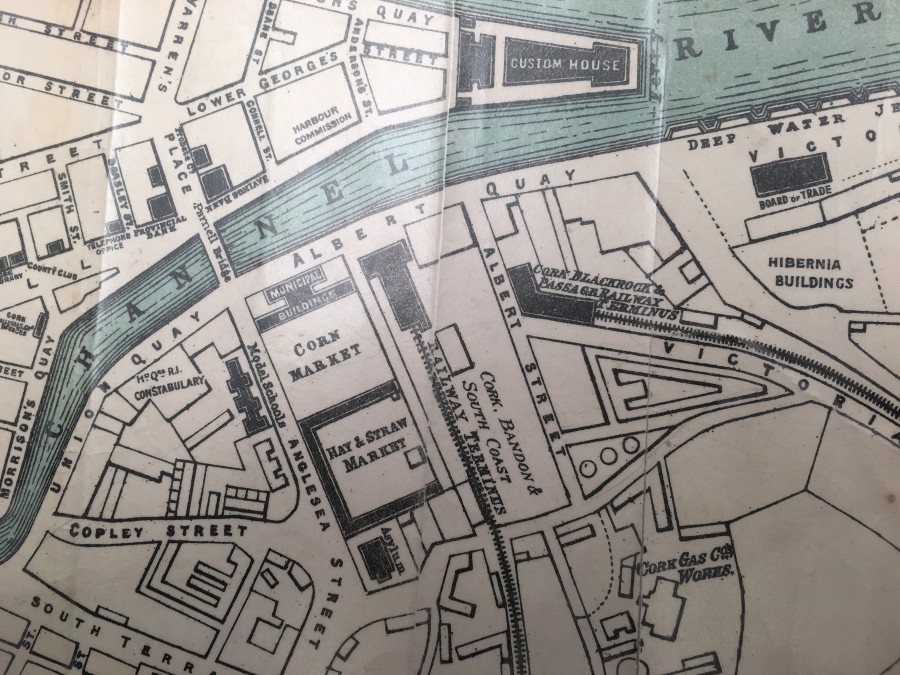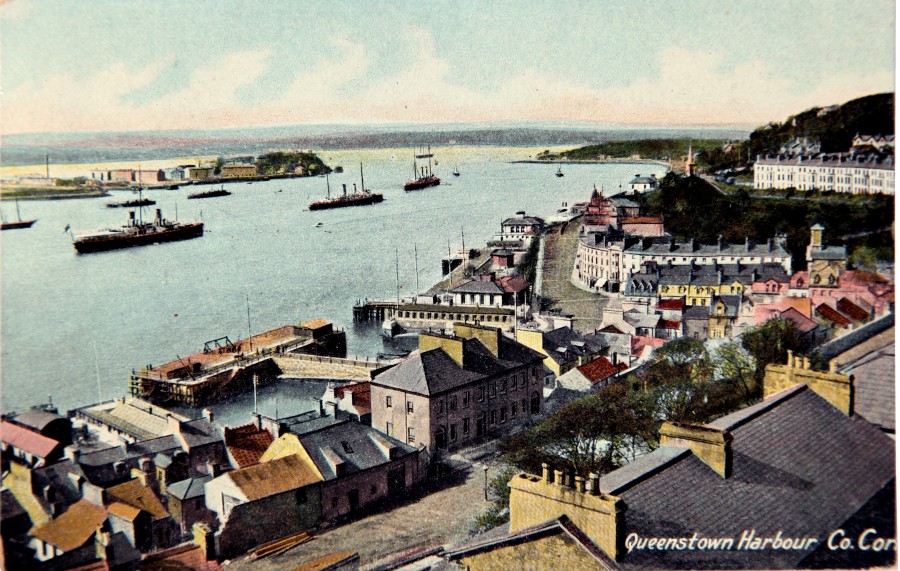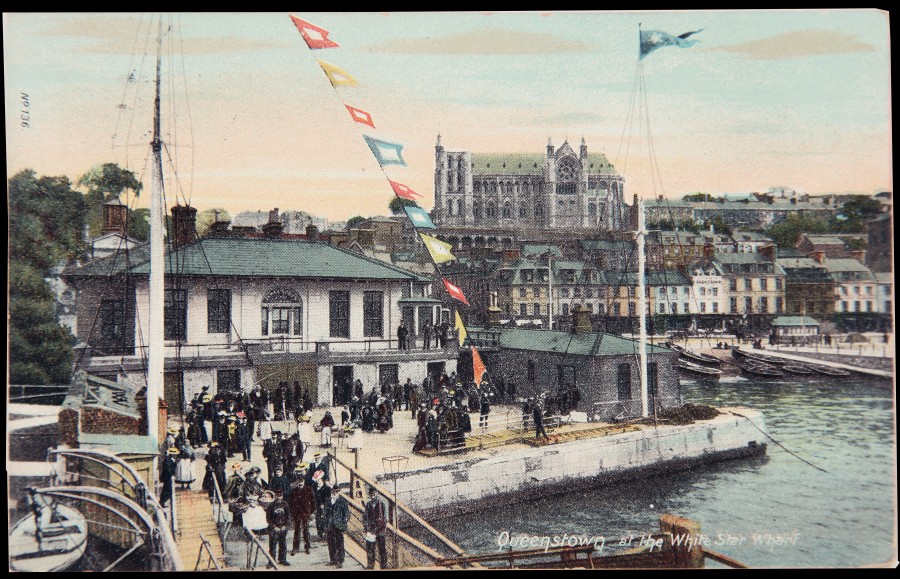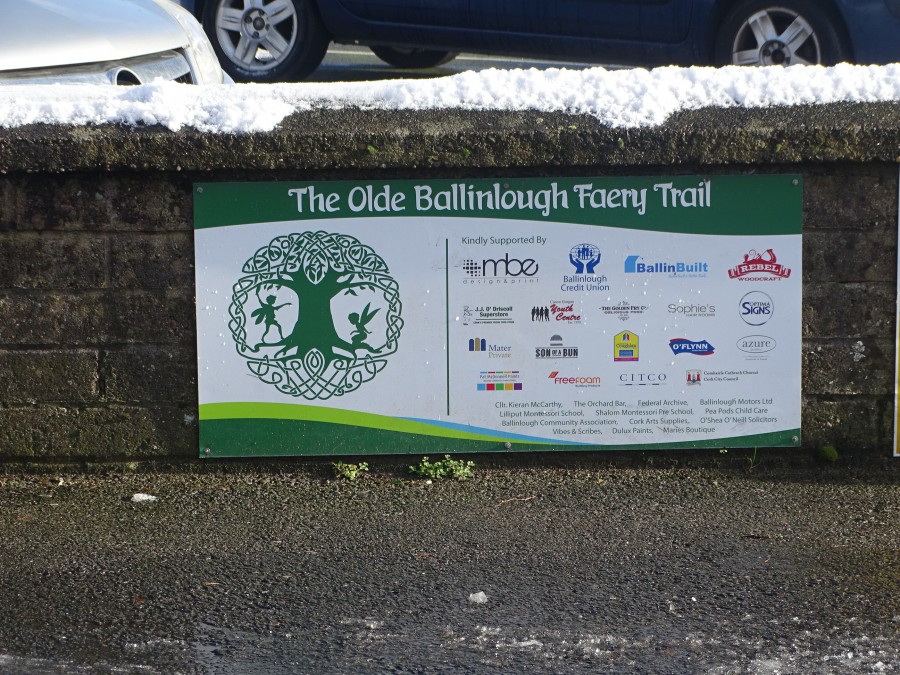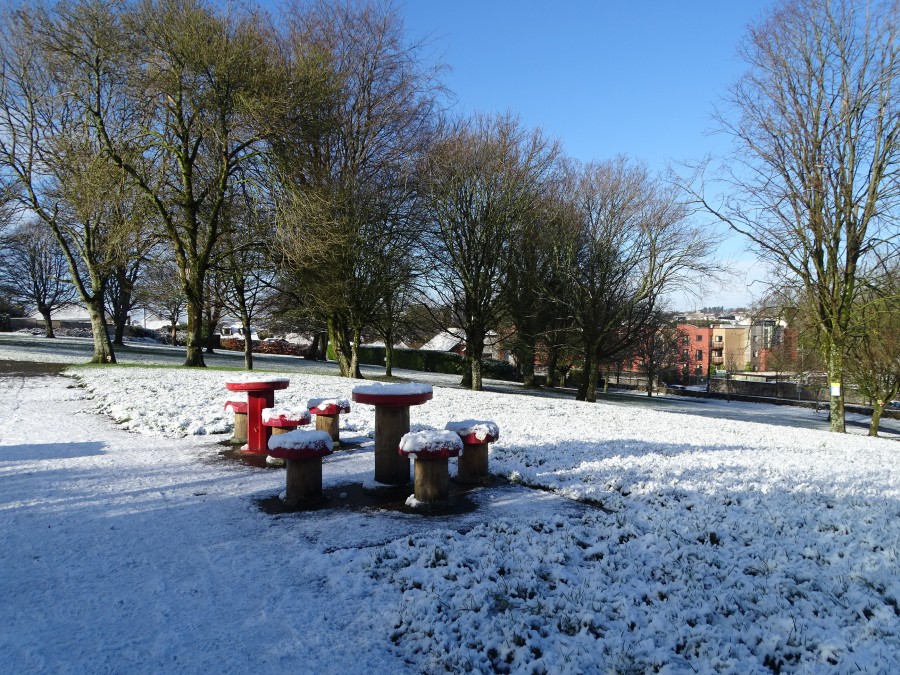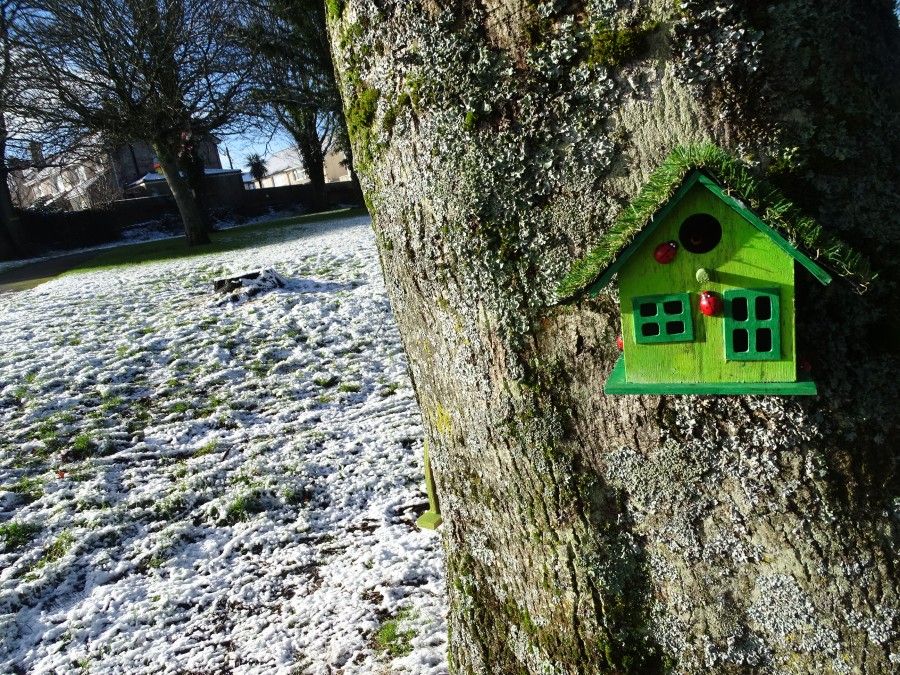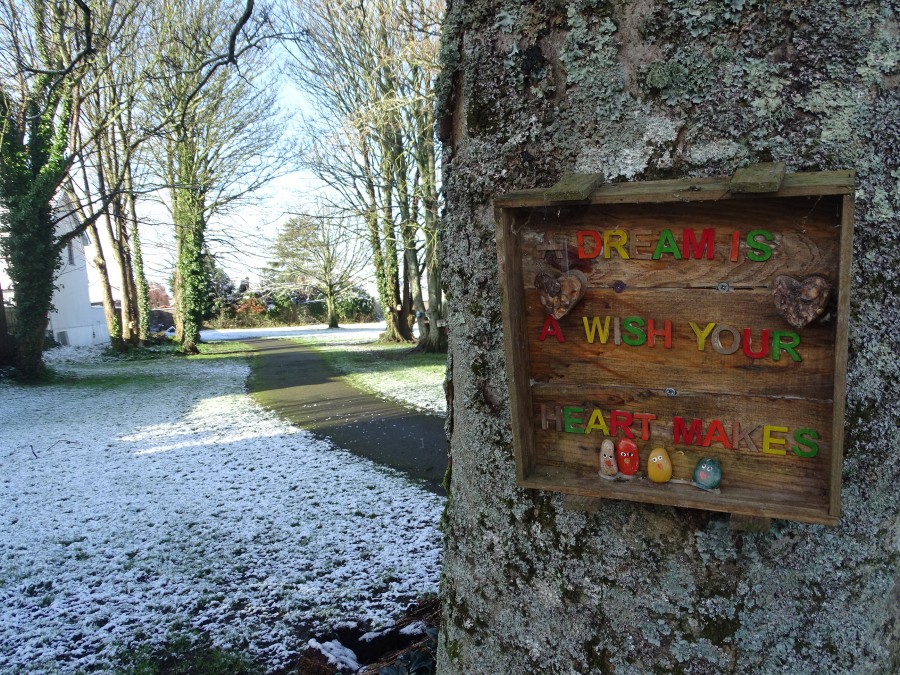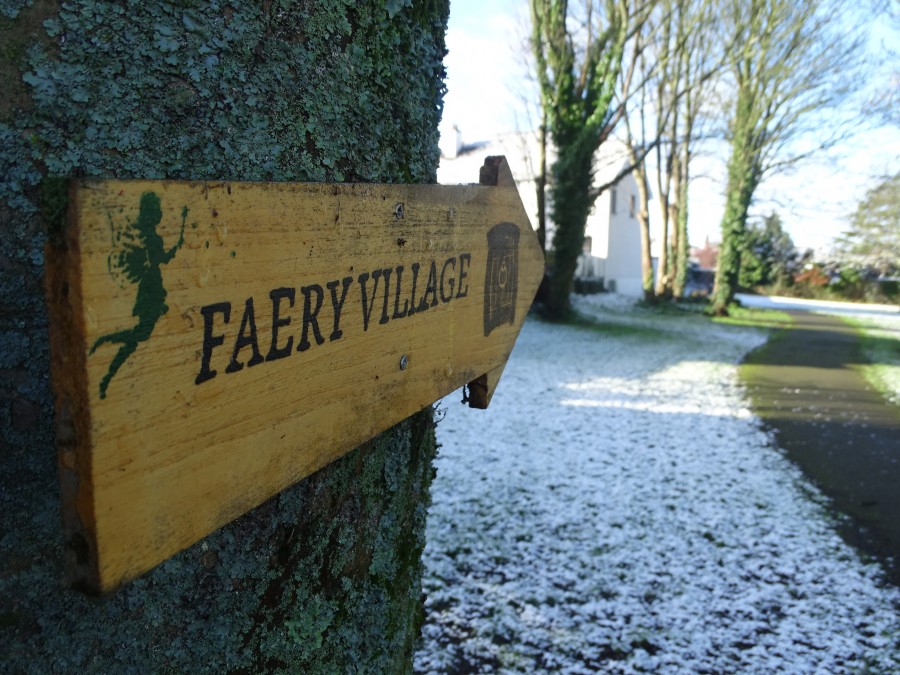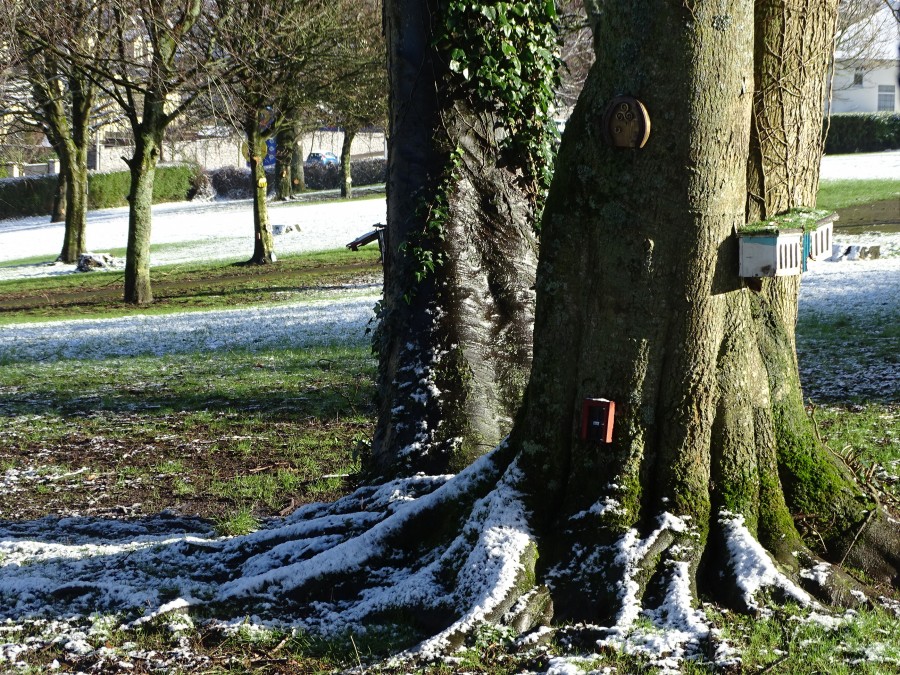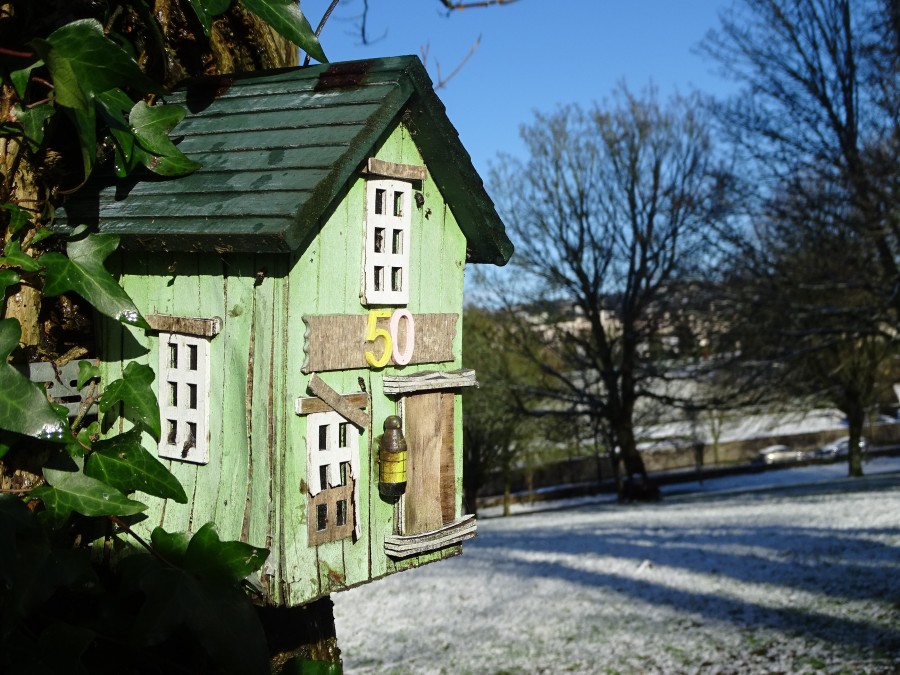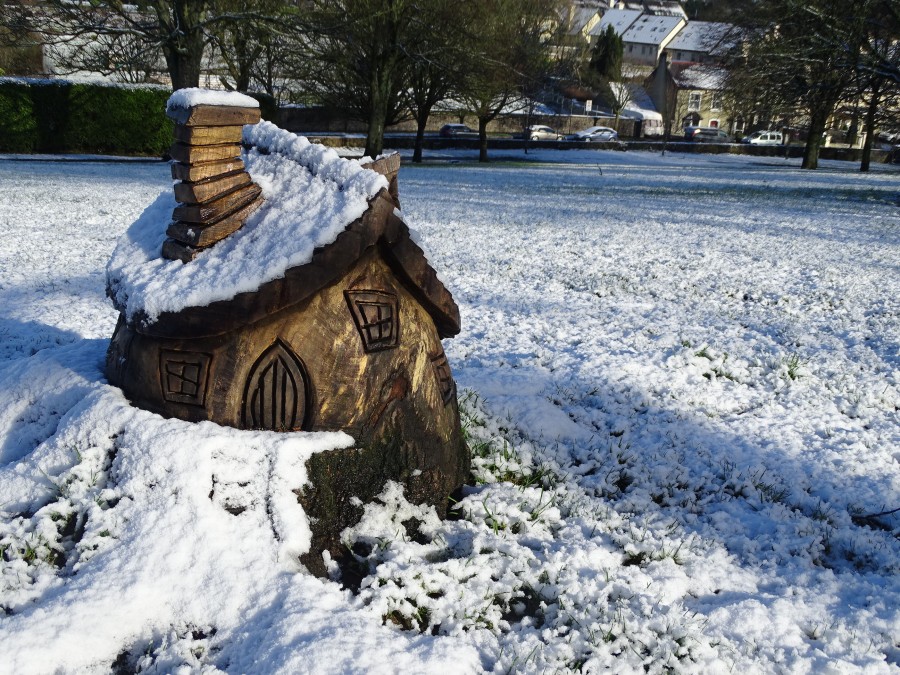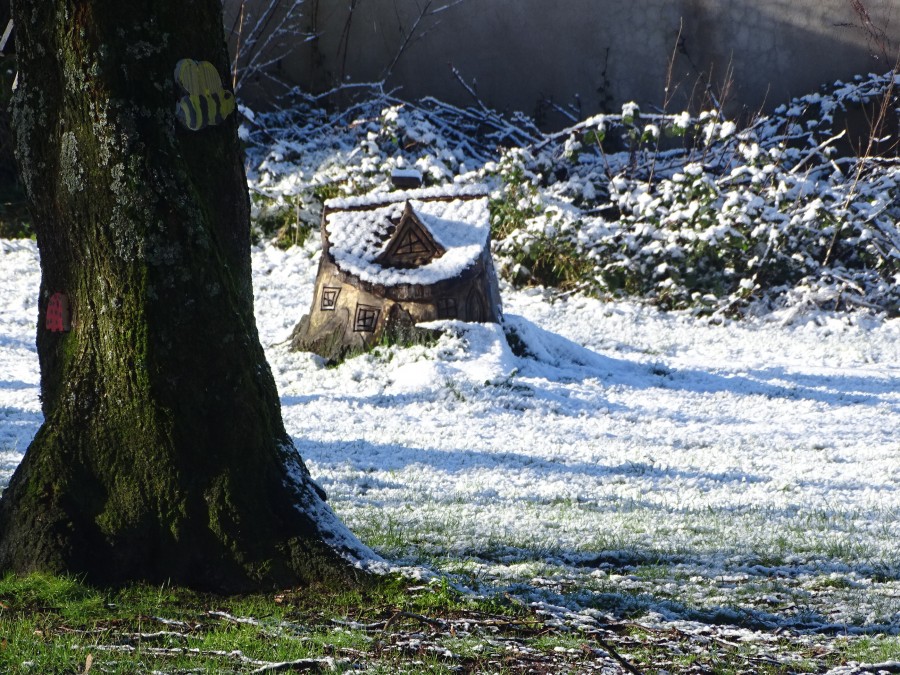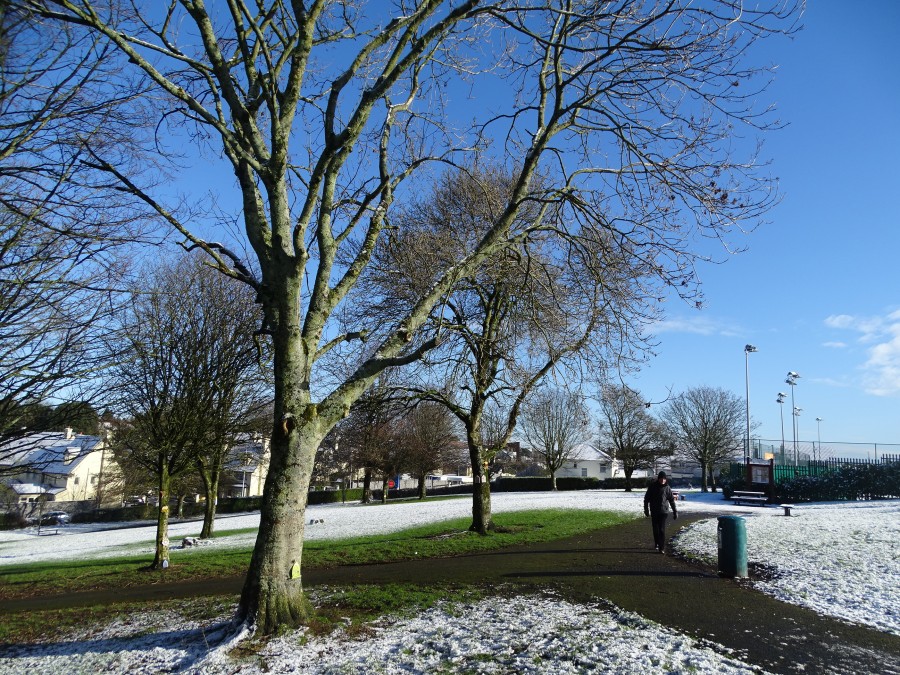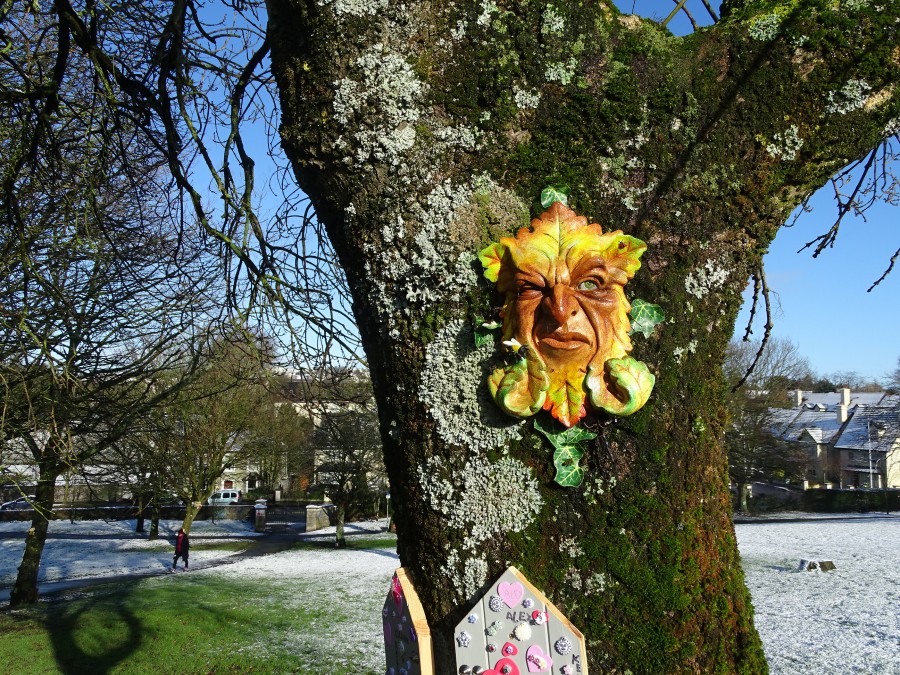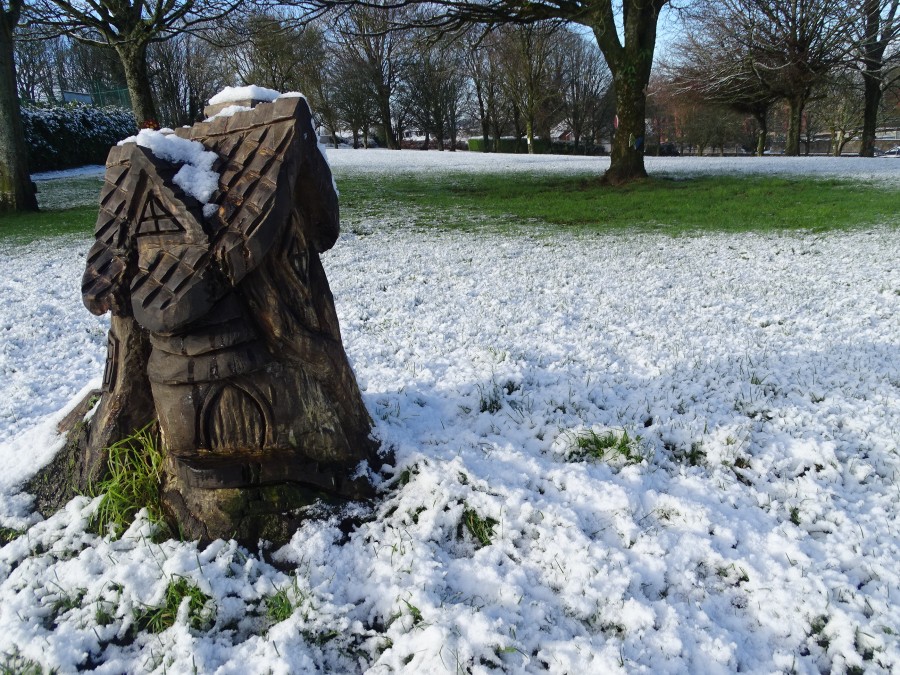Kieran’s Our City, Our Town, 21 February 2019
Kieran’s Our City, Our Town Article,
Cork Independent, 21 February 2019
Tales from 1919: A Postal Service in Debate
Before the advent of the First World War 250,000 people were employed in the British Postal Service. At the end of the 1917, 75,000 employees were released by the Postal Service for war service. By February 1919 despite the war being over rebuilding the employee base of the postal service was difficult. One hundred years ago, on Sunday afternoon 16 February 1919, a mass meeting of the Irish various associations representing Post Office employees was held in the Council Chamber in Cork City Hall. The Chamber was thronged with people.
The meeting aimed to articulate claims for increased wages and better working conditions, which were being put forward by the various executives. It was the first occasion of which the several federations in the service made conjoined demands. The details of the debate were published in the Cork Examiner in the days that followed. Concerns about temporary contracts, the minimum wage, equal pay for men and women and child labour all came up for discussion. There were several resolutions passed, the content of which, would take several more years and decades to come to fruition.
Opening the debate, the Chairman, Mr E Cussen expressed regret that representatives of some of the associations were anxious to be present and speak at the meeting but were laid up with influenza. He then asked the crowd, “If there is to be reconstruction in the Post Office, did they wish to have things rebuilt in the old order of things, or did they not desire something new and something more perfect?”. He outlined the various social, political, and economic changes taking place as a result of the war and dwelt on the effect of these changes on what he called the “democracy of the world”.
Mr Cussen emphasised the principle that “one class should not grow rich on the exploited labour of the other, and that the meeting claimed self-determination not in a political sense, but in the right to determine the conditions in which they gave their labour”. He continued that as employers of a great public service the employer should continue to take their place by the side of the general workers in the matter of improvement of wages and general conditions. Those present at the meeting, he highlighted, had no desire to go beyond the claims of the general workers, but they were not going to lag behind.
Mr J D Donovan of the Irish Association of Post Office Clerks (AIPOC) proposed a resolution about a wage increase; “That this mass meeting of Post Office employees demands an immediate general increase of permanent wages of not less than 150 per cent over pre-war rate, with an absolute minimum adult wage of 50s per week, and equal pay for men and women”. He pointed out that despite the complexity and work placed on all members of the services, the conditions, relatively speaking, were not much improved from those obtaining in pre-war days. The resolution was seconded and unanimously adopted.
Mr Whelan of the Postmen’s Federation moved a motion to reduce the varying long working hour week; “That this mass meeting of Post Office employees urges the various staff associations to press for shorter working hours generally in all branches, of the service, and the abolition of split duties except, for the usual mid-day meal interval”. He quoted instances to prove that instead of 43 hours a week, in some branches of the service, noticeably some postmen, had a working week of 72 hours. Mr J McGann of the AIPOC seconded the resolution and outlined the conditions of child labour in the Post Office – as long as 50 hours a week being demanded in addition to four hours in school attendance.
On the proposition of a Mr Britt, a resolution was adopted urging the executives of the various associations to press their demand for the adoption by the Department of the “principles of joint control”, recommended by the Whitley Committee. In 1917, to make sure that worker and industrial relations were kept positive during the war, the Deputy Speaker of the House of Commons John Henry Whitley chaired a committee that produced a report on the Relations of Employers and Employees. He proposed a system of regular formal consultative meetings, which became known as the Whitley Councils. The Councils were created due to the establishment of the Shop Stewards Movement. The Councils aimed to put in place effective arbitration mechanisms.
Mr D Kennefick of the Engineering and Stores Association, in seconding Mr Britt’s resolution, stated that at a conference of Post Office engineering staffs a resolution to press for the adoption of the Whitley Report had been carried by 10,000 to 200 votes, illustrating the strong support of Post Office employees in relation to the report and Whitley Councils.
Mr John McAuley (Supervising Officers’ Association) detailed the hardships suffered by men who had given long and faithful service, and who would now have to struggle to make ends meet on a pension of half their pre-war value with a purchasing value of less than a quarter of their wages on retirement. He also demanded that any adjustment of pensions should be retrospective over the war period. Overall, the City Hall meeting lasted several hours with more questions than answers emerging.
Missed a column last year, check out the indices at Kieran’s heritage website, www.corkheritage.ie
Kieran is also showcasing some of the older column series on the River Lee on his heritage facebook page at the moment, Cork Our City, Our Town.
Captions:
985a. GPO Cork, c. 1910 from K McCarthy & Dan Breen’s Cork City Through Time (2012)
985b. Present day GPO, Oliver Plunkett Street, Cork (picture: Kieran McCarthy)
Kieran’s Our City, Our Town, 14 February 2019
Kieran’s Our City, Our Town Article,
Cork Independent, 14 February 2019
Tales from 1919: The Society of African Missions
On 10 February 1919, Bishop Broderick, Vicar Apostolic, Western Nigeria held his first ordinations at the African Missions Church, Blackrock Road. The new Prelate of the African Missions was a native of County Kerry, having been born in Kilflynn in 1882, and was the first Vicar Apostolic of Western Nigeria. Twenty-seven postulants to Holy Orders were anointed at his hands on Blackrock Road. One hundred years ago, regular printed references appear in local newspapers as to the donations made for the Society of African Missions by Cork citizens and the merchant class.
The presence of the Society’s churches on Blackrock Road and in Wilton showcase near 140 years of living amidst the communities of Cork suburbs. The society is also blessed with a rich archive of documentation. Archivist Edmund Hogan has documented the history in his book The Irish Missionary Movement, A Historical Survey, 1830-1980 (1990). The Society was established in 1836. The Founder was a young French man, Bishop Melchior Joseph de Marion Brésillac who had spent 14 years as a missionary in India. Yearning to do more, Pope Pius IX commissioned him to set up missions on the West Coast of Africa. Many attempts had been made there previously, but there was little success. By 1858, Bishop Brésillac was ready to make his first attempt, sending two priests and a brother to Freetown, Sierra Leone. Arriving at Freetown in the beginning of May 1859, the Bishop found the city in the grip of a deadly yellow-fever epidemic. He contracted the disease and passed away after six weeks. The project passed to Fr Augustine Planque.
By 1861 the Holy See directed the missionaries to Dahomey in French Colonial West Africa, a land deemed safe enough for the European from the yellow-fever epidemic. Of the three missionaries who set out, only two arrived, for one died and was buried at Sierra Leone. However, the missions was supplemented with others and missionary stations were opened. Soon they were prepared to go to other sections of their vast territory, which at that time stretched from the Volta in the Gold Coast, to the Nile River. Huge difficulties were prevalent – from racial, linguistic, to physical, religious, to the shortage of all kinds of supplies. The Congregation of Our Lady of Apostles was founded by Fr Planque in 1876 to supplement the work of the existing male missionaries.
The arrival of the Society of African Missions in Ireland may be attributed to the advent of the missionaries to Nigeria. Nigeria was coming under the control of England, and English as a language was needed by those wishing to minister there. English-speaking priests were a necessity. This idea was that of Fr James O’Haire, a missionary from South Africa, who had met some of the African Missionaries. He suggested opening a foundation in Ireland and offered to go himself, even though he was not a member of the Society.
In 1876 Fr O’Haire arrived in Cork and, with the permission of Cork Bishop William Delaney, acquired a house at Lough View, Mayfield. Several African Missionaries were then sent from Lyons France to join him and considering that he had done all that he could, Fr O’Haire departed. Fr Devoucoux, who was then in charge, transferred to another house nearby. But even this accommodation was not enough. In 1879 he acquired the site in Blackrock Road and, joining in the work himself with the students and workmen, within eighteen months had erected St Joseph’s Church and house. In 1884 a Swiss priest, Fr Joseph Zimmerman, later a well-known figure in Cork, arrived to take charge and his enthusiasm for the project speeded up the expansion. Young men were recruited, given a secondary education and then sent to Lyons to study Philosophy and Theology.
In 1888 the Wilton property was acquired and to it students were transferred from Blackrock Road. This latter property was handed over to the Sisters of Our Lady of Apostles to serve as a temporary convent.
Once the church at Wilton was built over 1895 and 1896, Fr Zimmerman set about organising the affairs of the Society in Ireland with a view to the eventual erection of an Irish Province. Religious persecution had broken out in France and this made him all the more determined to prevent the Irish section of the Society from becoming embroiled in French affairs.
In 1899 correspondence began between Fr Zimmerman and Mr Llewellyn Blake, later Count Blake. Between 1900 and 1906 Father Zimmerman received £20,000 from him as bursaries for training students. In 1905 his house and property at Ballinafad, County Mayo, was given to the Society. The canonical requirements for a Province now existed: three separate houses, financial security, and the ability to find their own vocations. As a step towards such a new Province Fr Zimmerman first requested the Irish students should be trained entirely at an Irish Seminary.
Between 1880 and 1910 over two hundred students entered the preparatory houses in Ireland at Blackrock and Wilton; forty-two, maybe a few more, went on to Lyons. At the opening of the Society’s Province in May 1912 there were twenty Irish Fathers of over 270 priests and 30 brothers in the wider Society of African Missions. The work one hundred years was also documented in The African Missionary, which was published every two months by the Society on Blackrock Road.
Missed a column last year, check out the indices at Kieran’s heritage website, www.corkheritage.ie
Kieran is also showcasing some of the older column series on the River Lee on his heritage facebook page at the moment, Cork Our City, Our Town.
Captions:
984a. Map of Colonial West Africa 1920 (source: Cork City Library)
984b. St Joseph’s Church, Society of African Missions, Ballintemple (picture: Kieran McCarthy)
984c. Stained glass window with an African Missions theme at St Joseph’s Church Ballintemple, sponsored by the local Flaherty family (picture: Kieran McCarthy)
McCarthy: More public access to the Museum Collections is a must
Press Release
The need for more child friendly material, museum tours, audio-visual material, the demand for more local history, more interactive materials, the need for an online service, more connection to social media, more educational outreach, a genealogical research service, a linkage to the adjacent café, more seating and better signage in Fitzgerald’s Park are just some of the findings from SWOT analysis within a new draft strategic plan for Cork City Museum, which has come before members of Cork City Council.
Independent Cllr Kieran McCarthy noted that the report lays bare the need to modernise Cork Public Museum and especially to improve the service. “I wish to commend the museum’s curator in achieving a lot with limited resources, being very friendly, professional, open to new ideas, making progress with specific aims such as accreditation, inclusion, exhibition upgrading and collections care. His work on the Late Viking Age finds from the former Beamish and Crawford Site, World War I Trenches temporary exhibition as well the Jewish exhibit from the Old Cork Synagogue and the Traveller barrel top caravan have been great additions to telling the story of people in the Cork region”.
“The report lays bare though the need for more staff; you cannot have just one person responding to hourly emails on genealogy and object searches as well as planning for the future. For all intents and purposes, our museum is like a mini Crawford Art gallery. It needs more financial help to implement the proposals within the draft strategic plan. The objects that Cork Public Museum holds need to be made much more accessible to the wider public. For my part I will continue my lobbying in getting an educational officer installed within the Council, who could work between the Museum, local studies in Cork City Library and Cork City and County Archives. If this was a legacy post of the upcoming War of Independence remembrance programme in Cork City, I would be very content”.
The Museum has been located in Fitzgerald’s Park since 1945. In 2005 the long-awaited extension to the building was opened. This enabled the provision of new display facilities, showing a greater range of items relating to the history and culture of Cork City and environs. This, coupled with the more recent major enhancements of Fitzgerald’s Park, has led to an increase in footfall in the Museum.
Last year the City Council approved the proposal for the Museum to seek accreditation under the Museum Standards Programme for Ireland (MPSI). One of the key requirements of MSPI is to have a comprehensive strategic plan approved by the Council, with an implementation plan. To this end Heritage Works were commissioned to draw up a draft Strategic Plan.
McCarthy: Mardyke 300 to put Spotlight on Heritage, Community and Amenity Value
Press Release
A series of events are currently being planned for this summer to mark the 300th anniversary of the construction of Cork’s Mardyke Walk. They will be hosted by the arts, environment and parks section of Cork City Council. Local historian and Cllr Kieran McCarthy who lobbied for tricentenary events praised the initiative of the Council; “the construction of the Mardyke took place in 1719 to provide a promenade for the City residents, to offer pleasant recreation walks and thereby improve the health and well being of city dwellers. The celebration will consist of cultural, artistic, heritage, science and sporting events to acknowledge the contribution that the Mardyke has given to the general public”.
A City wide survey including the expanded area of public art and sculptures is also being pursued. Cllr Kieran McCarthy has noted that a new survey has been long overdue. “Some of the city’s sculptures need a conservation plan as well. For example some of Seamus Murphy’s works through weathering in Fitzgerald’s Park need a plan going forward”.
Cllr McCarthy continued: “Circa the mid-1960s, a Cork Sculpture Park Committee was established to create one in Fitzgerald’s Park. Professor Aloys Fleischman was the Committee’s Chairman. Seamus Murphy’s bronze bust of Michael Collins was one of the first of series of sculptures by the artist to be unveiled in the park’s landscape on 15 June 1966. In November 1977, Seamus Murphy’s Dreamline was an over life-size study of the head of the Madonna, carved in Portland stone, was completed by Seamus Murphy, in 1932, when he was 25 years of age. It was first exhibited in 1934 in Cork. Later it was shown, among other places at the Royal Hibernian Academy in Dublin”.
“The work of work such as Marshall C Hutson and Joseph Higgins can also be viewed in the park. In 2016 a Seamus Murphy bronze cast of Eamonn DeValera was donated to Cork City Council and erected on a pedestal in the park. The installation of the sculptures in the park through time also inspired the situating of sculptures in other parts of the city”.
Mardyke 300 is one 15 projects to be funded by the Creative Ireland Programme. Funding has been confirmed as £34,000 from the Department of Housing and Local Government, e15,000 for Cruinniú na nÓg and further e62,000 from the Department of Culture Heritage and the Gaeltacht. This funding is to be provided to projects such as literary ones, Cork’s musical heritage, a Medieval day at Elizabeth Fort, history and archives workshops plus information leaflets on St Finbarr’s and St Joseph’s Cemetery.
Kieran’s Our City, Our Town, 7 February 2019
Kieran’s Our City, Our Town Article,
Cork Independent, 7 February 2019
Tales from 1919: SS Joachim and Anne’s Asylum
“A meeting of the Trustees was held at the Asylum, Anglesea Street. This Institution was founded for the purpose of helping Old Ladies, who had seen better days, by providing them with a home and sustaining them as far as the means at the disposal of the Trustees would permit. Each inmate has a little room to herself, and gets a small weekly allowance for food, but on account of the increased cost of all necessaries, the Trustees found, with regret, that it is not possible to admit the full number of applicants for which there is room accommodation” (Cork Examiner, 5 February 1919, p.2).
On any given day within the Cork Examiner from one hundred years ago, the news is diverse. One institution, which receives passing references is SS Joachim and Anne’s Asylum. The old beautiful building has survived the test of time on Anglesea Street and is now in the guise of homelessness accommodation amidst the backdrop of a changing skyline in the City Hall and Cork’s Docklands quarter. The Buildings of Ireland project notes the building’s importance for retaining its “intactness, original street boundary walls and railings, gardens, as well as building fabric”. Unfortunately, a limited amount of historical material survives for the story of the building with little or no documentation surviving for residents.
Founded by bequest by John Lane for Roman Catholic girls in 1843, the original and temporary premises was on Rutland Street. In January 1854, a call was sent out in the Cork Examiner by the Trustees of SS Joachim and Anne’s Asylum for Distressed Gentlewomen, seeking building ground. All proposals were to be sent in to Paul McSwiney, Secretary. They wished to receive proposals “for a Site, within the city, “of about 60 to 70 Feet Front by 120 Feet Deep, for the purpose of erecting a new asylum”. A space was chosen behind the City’s corn market on Anglesea Street and rented from a Mr Wise.
In February 1855, the trustees invited architects “to furnish with sections and in lines plans of a new Asylum”. A premium of £5 sterling was to be given for the plan approved of. The successful architect was Henry Hill. According to the Dictionary of Irish Architects, Henry Hill was born in Cork in 1807, the second surviving son of Thomas Hill and a younger brother of William Hill who also became an architect. Henry may possibly have gained some of his architectural training in England. He was in London from at least January 1826 until early 1827. He left London on 27 January 1827 and arrived in Cork. He designed with his brother William, the Corn Exchange (now the site of Cork City Hall) on Albert Quay, the Old Queen’s Old Castle, c,1835 for William Fitzgibbon and he was architect on Cobh Presbyterian Church, completed in October 1855.
An article in the Cork Examiner for 12 November 1858 highlights that the exterior portion of SS Joachim and Anne’s was nearly finished through the building work of Samuel McMullen at a cost of nearly £2,000; “it is a handsome and tastefully designed structure of the old English style of architecture, and when it is completed, it will be, perhaps, the greatest of the improvements that are in progress in that locality. The materials used are the best Bridgewater red brick – the Cork Brick Company, having been ready to supply when the work was commenced – with cut stone dressing, and the effect of the whole, including the fancifully designed windows, is striking and very pretty”. The news report further details that the accommodation provided was for twenty inmates; “there is every requisite that may be said to constitute a comfortable residence, but should the funds be increased by bequests, subscriptions, or otherwise, so as to enable them to support a large number, the building will be proportionally enlarged. There is also a small chapel attended for the use of the inmates”.
In 1919, apart from SS Joachim and Anne’s the City had several asylums, homes and houses for impoverished women and men from Roman Catholic and Protestant backgrounds. Skiddy’s Almhouse (est.1715) in St Anne’s Shandon Churchyard was for aged females, Protestant and Catholic. The Asylum for the Industrious Blind on Infirmary Road was established in 1843. Lapp’s Asylum on Western road was founded in 1856 for aged and infirm people of the Protestant faith. The charity supported sixteen aged and infirm Protestant ladies in the Asylum and assisted twelve more ladies and gentlemen in their own homes with a weekly allowance. Bretridge’s Charity was founded 1685, for the maintenance of seven old soldiers. It merged in the City of Cork Church School Board. Residents of St Mary’s and St Anne’s Shandon. The Green Coat Hospital was endowed in 1720 with a school and almshouse and provided for impoverished and aged Protestant housekeepers of the Parishes of St Mary’s Shandon, St Anne’s Shandon and St Luke’s, Cork.
Across in Montenotte the Honan Home (under a Royal Charter and Board of Governors) was founded and endowed in 1896 by the Mathew Honan for twelve impoverished and aged gentlemen from the city and county of Cork. The Home for Aged and Destitute Men and Women in Montenotte was under the care of the Little Sisters or the Poor whilst the House of Mercy at St Marie’s of the Isle was a home for destitute girls.
Missed a column last year, check out the indices at Kieran’s heritage website, www.corkheritage.ie
Kieran is also showcasing some of the older column series on the River Lee on his heritage facebook page at the moment, Cork Our City, Our Town.
Captions:
983a. SS Joachim and Anne’s house, present day (pictures: Kieran McCarthy)
983b. View from Elysian Tower of SS Joachim and Anne’s Asylum 2008
983c. Map of Cork City Hall area in 1893 (source: Cork City Library)
McCarthy: Library Service needs to be planned for in the Expanded City
Press Release
Independent Cllr Kieran McCarthy has called for a new library plan for the expanded City library service which will coincide with Cork City’s boundary extension. The passing of the boundary extension will have significant implications for the City Library Service. A population increase will also bring an increase in the number of library buildings, and an increase in the number of schools using the library service.
Cllr McCarthy noted: “more and more libraries are playing a central role in hosting community events and maintaining links with local schools and their reading programmes. The libraries of today differ from libraries of yesteryear. With the expansion into the county, it is imperative that library community programmes and strategies are not diluted but expanded. There is a need to bring staffing levels up to normal levels – so basic aspects such as marketing programmes can be fufilled. Through retirements, there have also been too many unfilled posts over the past few years. These need to be filled”.
“I would like to see a focus on more educational programmes – more linkages between local libraries and local schools. I would also like to see more work being pursued on sharing ideas on community programmes between other libraries in Ireland and especially abroad. There is much that Cork can learn as well from other library programmes across the EU. In addition, the need to build a new City Library and a new library in Blackrock and Mahon remains on my lobbying list”.
Cllr McCarthy has welcomed the decision by Paul Moynihan, Director of Services, to engage with the Department of Rural and Community Development to pursue all options for further investment in, and enhancement of service. In recent years the City Council has benefitted from investment under a number of initiatives such as Healthy Ireland, Work Matters, the Digitalisation programme, Creative Ireland. The investment has resulted in improved services and has increased the value of library facilities to the communities they serve. The further enhancement of library services across the extended city should remain a priority for the City Council.
Interactive Map, Cork City Council Boundary Extension 2019
On June 1, Cork City will grow to nearly five times its current size taking in areas including Douglas, Rochestown, Ballincollig, Blarney and Glanmire. As part of this planned expansion, the population of the city will grow by 85,000 to 210,000.
The increase in size of the City will allow Cork City Council to take a take a lead role in driving the growth of the city and metropolitan region – driving improvements in investment, public transport, infrastructure and housing.
Staff at Cork City Council are working with Cork County Council to ensure that the transition of public services is as efficient and as seamless as possible. With time, a bigger Cork City will also provide us with scope to further improve and expand our services to the public.
For queries in relation to the Cork City Boundary Extension, please email transition@corkcity.ie
In addition Cork City Council is making available an interactive online map which allows residents, businesses and communities to confirm whether you will be living and/or working in the soon-to be expanded Cork City.
Users can insert their Eircode (please ensure you use the correct Eircode format including a space between the first three and last four characters) or postal address to search for their property (use the down arrow to the left hand side of the search box to select Eircode or address search).
The interactive map also shows you which ward or local electoral area (LEA) you will be voting in, in the upcoming local elections, the number of councillors to be elected in each LEA, and the population of each LEA.
http://corkcity.maps.arcgis.com/apps/webappviewer/index.html?id=570fc5da59ca4b60b6e8fede282881bf
Kieran’s Our City, Our Town, 31 January 2019
Kieran’s Our City, Our Town Article,
Cork Independent, 31 January 2019
Tales from 1919: The Return of the Liners
On Saturday evening, 11 January 1919 the first after-war advertisement of the City of Cork Steam Packet Company appeared in the Cork press. It announced passenger rates and accommodation on outward bound ships from Cork. Shipping within the port had re-emerged but German submarines had sunk many of the comfortable and speedy boats and ships.
In January 1919, three ships of the steam packet company operated from Penrose Quay. They were the Kilkenny, Chieftain and Eblana and all three were good boats in their own way. However, all three were not large ships and hence passenger booking was restricted. They were also prone to rocking in poor weather. Such restrictions were sent to the Ministry of Shipping and Transport. The Chieftain was the regular Fishguard boat whilst the Kilkenny was the Liverpool bound ship with remit as well to transport live stock. The Eblana also had connections to English ports.
The minutes from the Cork Harbour Board meeting on 15 January 1919 detail the extent of lobbying work pursued by Mr D J Lucy, Chairman, in relation to get foreign steam ship companies to re-open trade with Cork. Memory was ever present of the several steam packet companies, which had left Queenstown (now Cobh) a few years previously. In the late nineteenth century, no fewer than ten North Atlantic steam packet companies were calling to Liverpool to convey passengers, of which nine stopped at Queenstown. These were the Cunard Line, the Allan Line, the American Line, the Beaver Line, the, the Dominion Line, the Inman Line, the Guion Line, the National Line and the White Star Line. The Warren Line was the only company that did not make Queenstown a port of call. The advent of the twentieth century coincided with new challenges. Queenstown’s position as a North Atlantic gateway of departure was threatened before the century was a decade old. In 1907, the White Star Line changed its terminal from Liverpool to Southampton and by-passed Queenstown as a port of call on its eastbound route.
The heritage panels in the Queenstown Story Heritage Centre reveal that on 6 November 1859, the first Cunard paddle steamer named Canada steamed into Cobh harbour beginning a connection between Queenstown and North America. The connection continued without interruption except during the periods of the two world wars. The residents of Queenstown saw up close the development in size, speed and comfort of the Cunard transatlantic liners from wooden paddle steamer to quadruple-screw, thousand-foot liner. Much of the population worked with the company. Great improvements were also made by the Cork Harbour Board, with port facilities and lighting and buoying of the entire area under the control of that ever-watchful board.
Under the date 10 January 1919, the General Manager of the Cunard Company, Liverpool wrote to the Cork Harbour Board. The manager acknowledged receipt of the Board’s letter and the wish that the Cunard Company would resume their sailings to and from the Port of Cork, now that all Admiralty restrictions at the port were cancelled; “We have been looking forward to the resumption of our old friendly relations with the Commissioner, and hope it will not be long before our first ship calls at Queenstown. Meantime we note that we may count upon the Commissioners giving every facility to the Company, and the matter shall receive our careful attention”.
The Managers of the White Star Line, replying to a similar letter from the Cork Harbour Board noted: “We have already had under consideration the question of recommencing the call of our steamers at your port, but for the moment we are unable to make any definite plana in connection therewith. Our vessels are carrying full complements of troops westward, and are still running under Liner Requisition. We will not fail to advise you immediately we see an opportunity of resuming not only the call of the steamers, but also the old friendly relations, which, as you say, have existed between us for such a long period”.
Liverpool’s Mersey Docks and Harbour Board gave one month’s notice of surrender of the hopper Owenabue. Harbour Members said that this would mean a big loss of income to the Board as the hopper was let out at £350 a month. It was decided to revert to the pre-war hiring arrangements, £250 a month.
In connection with the resumption of the docking outside of Cork harbour of the White Star and Cunard liners in the spring of 1919, the Town Clerk of Queenstown wrote in January to the managers of the companies. He outlined the question of and proposals for an improved tender service. His letter gives insight into the challenges of not being able to bring the larger ships into the harbour and the inconvenience of it for passengers. In pre-war times the ordinary tourist traffic dealt with the tenders Ireland and America. They were ill adapted to the work required of them – that of intercepting the liners in the open sea outside the mouth of Cork Harbour and conveying hundreds of passengers and their heavy luggage to the deep-water quay at Queenstown. The tenders were responsible for unnecessary delays to the liners. For example, working from them at sea in bad weather often led to a failure of unloading. It was also well known that large numbers of American tourists wishing to disembark at Queenstown to tour Ireland, declined to do so when they found the small class of ill-equipped tender provided to convey people to the shore – a distance of several miles.
Missed a column last year, check out the indices at Kieran’s heritage website, www.corkheritage.ie
Kieran is also showcasing some of the older column series on the River Lee on his heritage facebook page at the moment, Cork Our City, Our Town.
